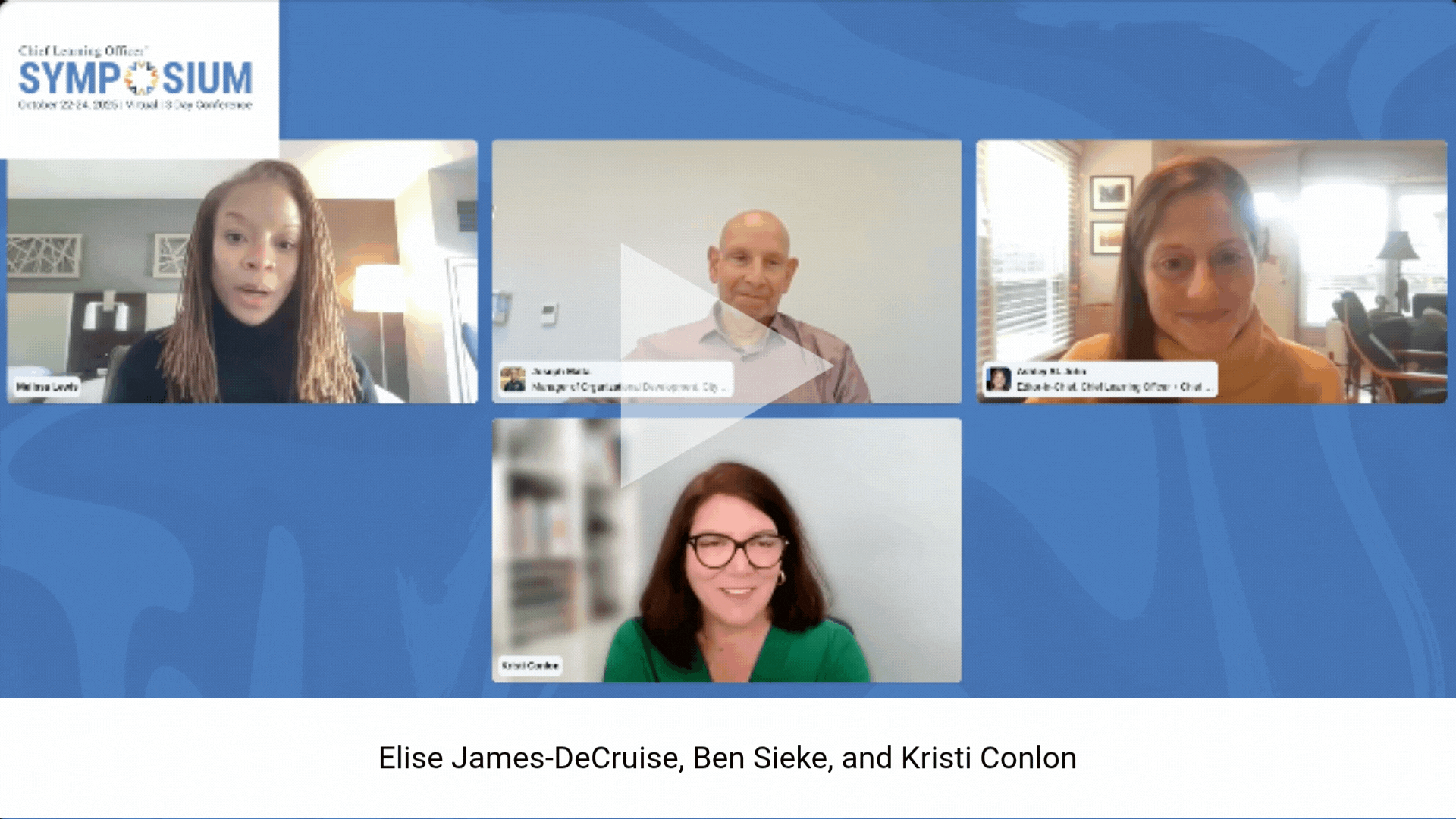 Over the past several years, we have seen a continuous disruption in the corporate learning market, and it threatens some of the more traditional tech tools like the learning management system. Let me explain.
Over the past several years, we have seen a continuous disruption in the corporate learning market, and it threatens some of the more traditional tech tools like the learning management system. Let me explain.
Instructor-led training has shifted from almost 70 percent of L&D spending in the early 2000s to less than 40 percent today. Traditional e-learning, which was pioneered only 10 years ago, is now often considered boring and commodity-like. Video-learning, which was expensive and difficult to author for years, is now ubiquitous. And our attention span for content has dropped, almost to the point that popular TED videos are too long.
Today we all have too much content and not enough context. It’s hard to decide what to read, what to watch, and what courses to take. We want microlearning to tell us precisely what we want to know, and later we’ll go back and read the book, complete the course, and maybe take the test.
The MOOC (Massive Open Online Courses) marketplace, which has exploded around the world, is now an institutional part of the corporate learning market. Yet this form of content was never designed for an LMS, and most of it runs in proprietary back-end systems.
Finally, companies have unleashed the power of user-developed content. Companies like GE and IBM now foster and reward people for authoring high-fidelity videos, and they want to put all this content online in a place that’s easy to find, rate, recommend and comment on.
Meanwhile, the LMS is under attack. Over the past few months, I’ve talked with dozens of companies about their LMS investments, and they’ve said their LMS doesn’t deliver learning anymore; it’s primarily a system to track completion and manage compliance.
So, where do we go to actually learn? There’s a tectonic shift happening, and a new breed of learning technology companies like Degreed, Pathgather, EdCast, Grovo and Watershed have emerged. These companies offer platforms that curate, organize and recommend content based on learner activity, experience, job and skills. These new “learning experience platforms” — they are not learning management platforms — are now used by hundreds of companies like GE, Wal-Mart, Visa, Qualcomm, Sears, Caterpillar and many others — to create what I like to think of as the digital learning platform. While they don’t have the business rules and traditional compliance processing of the LMS, they have paths, recommendation engines, smart search and lots of social tools to help make them easy to use, fun to experience, and they’re designed to author content quickly.
The big ERP vendors, such as Workday, Oracle, LinkedIn and SAP have all moved in this direction as well. Workday’s new learning platform is essentially a video delivery system; Oracle’s new video learning platform is a YouTube-like system; and SAP JAM was originally designed for video sharing. But not all systems are compelling, as companies snatch up these new learning experience platforms to fill their development needs.
I was on the phone with the folks at Visa recently, and their new digital university uses one of these tools. It integrates with all their content providers, and it uses the X-API — an emerging industry standard that lets any form of content provide tracking and completion information to a database — to create a detailed “learning store” and analytics engine to analyze employee usage. After only a few months of use, the company is already flocking to it for more learning than ever before.
Now, I have great respect for the LMS vendors and the $4.5 billion LMS marketplace. More than 100 million users have licensed an LMS, and they’ve done an amazing job of managing, tracking and recording training usage for two decades. But as we move away from programs toward content, and we shift toward mobile, video and curated experiences, the LMS just has not kept up. Its original architecture, designed in the 1990s in the days of traditional operational systems, simply does not meet learners’, users’ and professionals’ needs today.
A disruptive change has occurred. Companies no longer look at their LMS as the core of their learning infrastructure. It’s now the back-end, and they are searching for a new employee experience, which demands a new set of tools.
There are many exciting things happening in the learning technology space: tools like Workplace by Facebook, Slack, and Skype are becoming enterprise-class, and these tools will likely become primary destinations for learners too. Now we need a new class of learning platforms that bring all this content together, deliver it in a compelling way, and give us the social and mobile experience we use every day throughout our life at home.
Will the LMS companies keep up and reinvent themselves? So far, they haven’t done very well. Whatever happens, it’s going to be a wild wide. The new learning experience platforms and their tools are growing at an astounding rate. They’re redefining the landscape for digital learning right before our eyes.
Josh Bersin is founder of Bersin, now known as Bersin by Deloitte, and a principal with Deloitte Consulting LLP. He can be reached at editor@CLOmedia.com.














